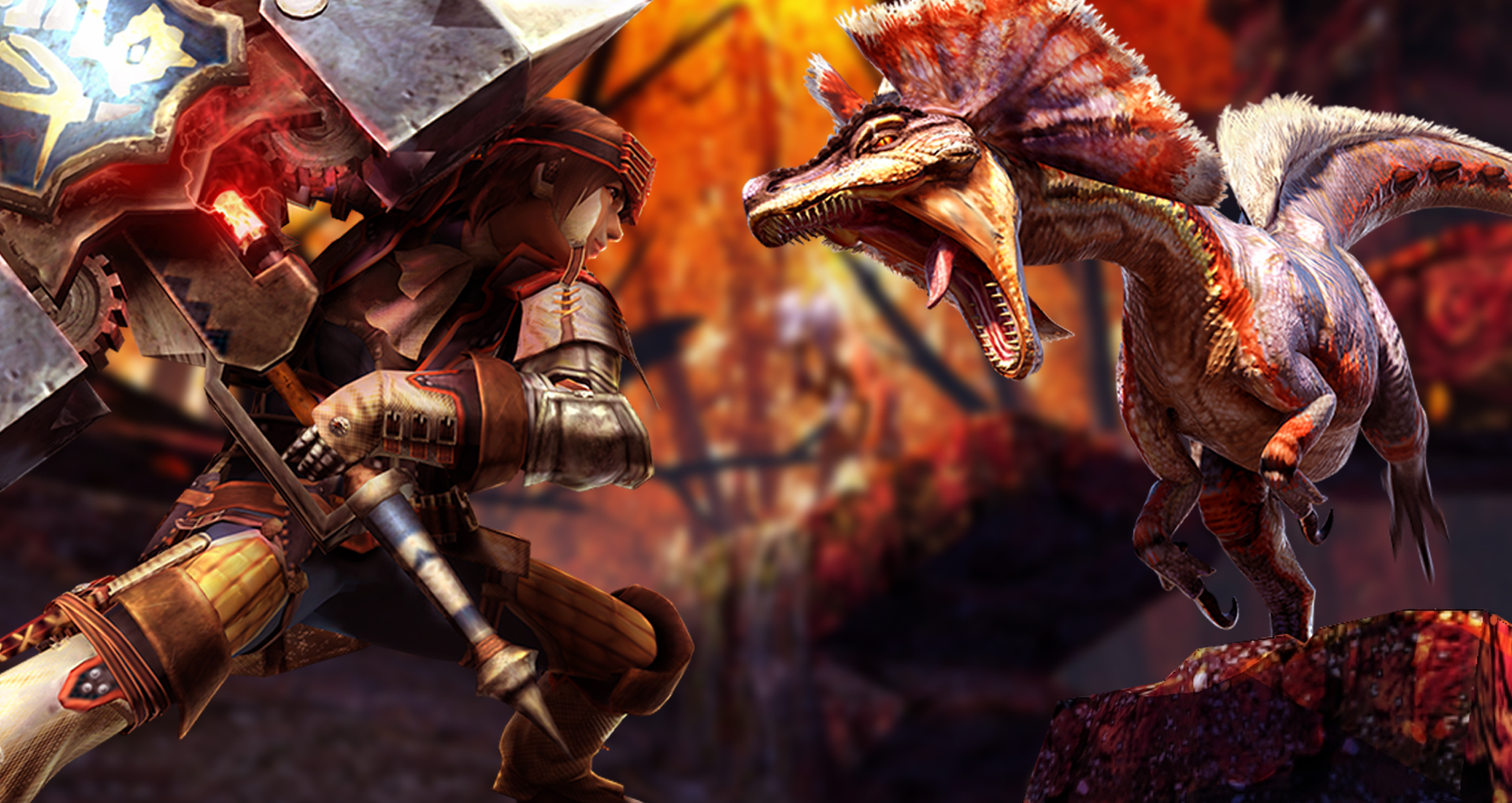GamesRadar+ Verdict
Monster Hunter 4 Ultimate doesn’t offer much new beyond its predecessors, but it perfects so much of what they tried that it's undoubtedly the series' best, and among the best games on 3DS.
Pros
- +
A massive game on a tiny console
- +
Incredible monster design
- +
tough combat
- +
Brilliant
- +
unexpected writing
Cons
- -
Impenetrable stats
- -
cluttered inventories
- -
Mounting adds less than it should to combat
- -
We would have liked a go on a big screen
Why you can trust GamesRadar+
I have spent five hours trying to build armour that makes me look like a huge, bipedal lobster. To do so, I’ve trekked, harvested, mined and murdered my way across the world. I’ve sent tiny, talking cat minions fishing. I fought a giant landshark nine times, in the hope that its icy back would drop a specific type of crystal. As I finish the helmet - all crustacean feelers and empty, black eyes - I tingle with a feeling almost no game can offer: actual achievement. Not the hollow victory of collecting the usual scattered collectible scraps of open-world games, but the sensation I usually get after making a meal from scratch, or having yet another child. Monster Hunter 4 Ultimate is quite the thing.
For those who have played previous games in the series, the set-up is familiar. Within the stat-stuffed trappings of a JRPG, Monster Hunter lives up to its name, a true fantasy hunting game. The gentle rhythm remains - heading out into the wilds, picking herbs, mining ore or carving beast-flesh, before returning home to craft items that make that whole process more efficient, or give you the opportunity to take on harder challenges.

It’s still several different action games at once, similar to Bayonetta, in the way every weapon type (of which there are now 14) turns combat into an entirely different experience - this game’s two new weapons help show that off perfectly. The transforming Charge Blade, which can be both ‘sword and shield’ or ‘greataxe made out of a sword with a shield stuck on the end’, is a leaden thing, totally reliant on considered, occasional strikes and blocking. The Insect Glaive, on the other hand, is an acrobatic whirlwind of attacks accompanied, weirdly, by the ability to send a compliant insect to suck the juices out of monsters’ body parts, rewarding you with useful stat buffs. Learning one will not help you with the other - you need to specialise.
The game also, stubbornly, continues to refuse to explain itself. It’s an imposing mess at the best of times, tens of different stats competing at once, multiple inventories, invisible calculations being made with every swipe of a sword. Minor improvements have been made - there are now clearly defined tutorials for every weapon type, and customisable item sets speed up the interminable inventory process - but this is still a game that takes the help of a seasoned player, or YouTube video series, to fully understand.
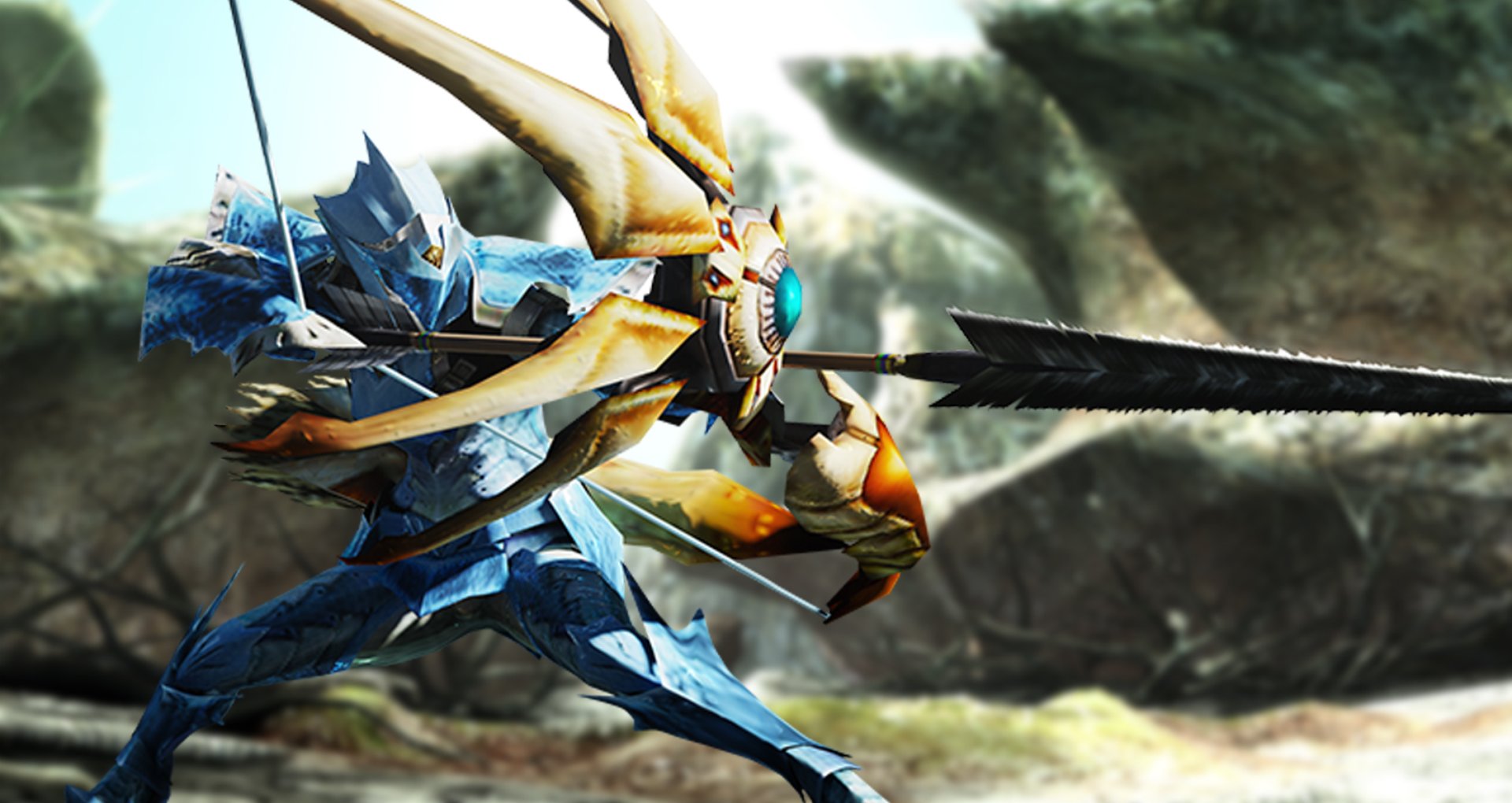
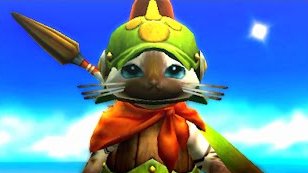
Replacing the last game’s freakish coconut men, Palicoes are 4 Ultimate’s new AI companions. A race of squealing cat-people who can be collected like Pokemon on your travels, each comes with individual stats and abilities. Taking a lot of damage? Find a healer. Using a ranged weapon? Find one brave enough to distract huge enemies. And even if you don’t want to use them, a couple of Palco minigames - including fishing and their own automated mini-hunts - let you use their abilities in new contexts, netting you rewards in the process.
What differentiates MH4U - an upgraded re-release of the game that conquered Japan two years ago - is how it turns that often cold, repetitive hunting process into something that feels as though it serves a wider goal. You’re still most often searching for, say, a single rare plant seed to make, say, a weapon that does slightly more damage to, say, a ten metre-long dragon made mostly of granite. But now that dragon is blocking your path to a new area, a new piece of story and, perhaps most revolutionarily for the series, a new chat with one of its characters.
This is the game’s secret weapon. The action lies in slaying fantasy animals in prolonged bouts, but returning home triumphant can now be just as exciting. Simply put, some of the writing on show here ranks among the most charming game dialogue I’ve come across; characters, jokes and relationships build over a game that takes tens of hours to ‘finish’ and hundreds to master. The game now revolves around a travelling caravan, taking you to multiple locations (each with their own quirks and minigame activities) alongside a familiar cast - it’s a perfect way to build affection, while keeping the player on their toes.
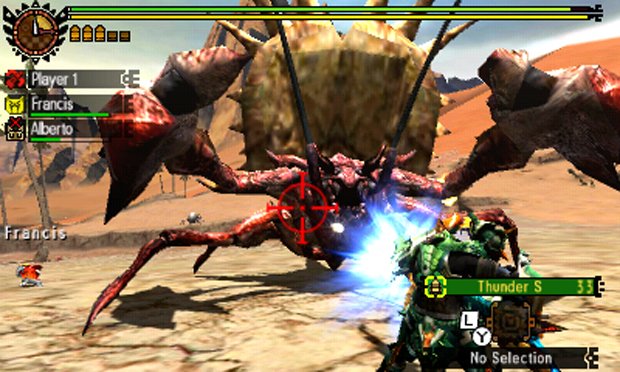
That’s a philosophy that extends to the changes made to the main formula too. While the game’s main quests are still set around several recurring areas - each populated by different flora and fauna - you can now head out on Expeditions. These are randomly generated journeys that pit you against mixtures of monsters you’ve already fought, which can lead to extra treasure, rare loot or new costumes for the stupendously cute pet pig you keep in your house.
Fighting said monsters remains fundamentally familiar, reminiscent of the Souls series’ weighty, punishing combat, except everything that qualifies as a fight here would be a boss battle in another game - from huge, scaly birds that blind you, then poison you, to enormous spiders that eat those huge scaly birds. The monsters are the true stars of the show, breathtakingly designed and animated things that forego the need for HP bars and screen clutter. You’ll know exactly when you’re winning because creatures now limp, and you’ll know when you’re losing because you’ll have had a tusk shoved through your sternum. Frankly, how all of this is contained so perfectly on such a miniscule console is beyond me - it’s a technical marvel quite apart from anything else.
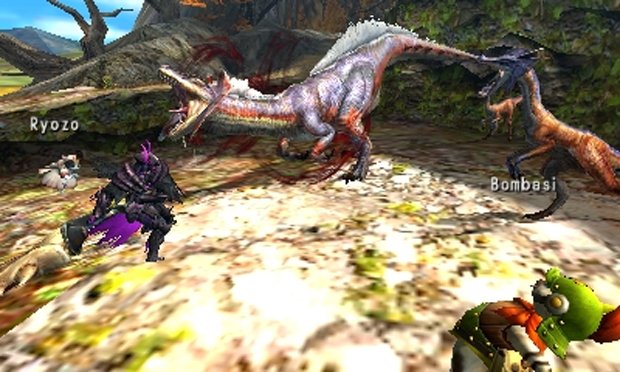
MH4U adds the ability to climb walls and leap onto those colossi. While it’s a new way to jab unsuspecting beasts, it sadly amounts to little more than a QTE, a far cry from the game’s massively intricate combat. That said, the addition of mounting makes far more sense during multiplayer sessions - now made easier by 4 Ultimate’s Gathering Hall, an area that acts as an online meeting area for friends and strangers alike. The game’s single player mode might be the heart of the game, but play with three friends and you discover its deepest and most complex tasks. In multiplayer different weapons interact in a number of interesting ways, and you can employ proper tactics. For example, while players mount monsters as a distraction, others heal up and yet more focus on reward-heavy subquests. All of which lets you bring the spoils back home to make that one last piece of lobster armour you need.
This is the crux of Monster Hunter’s greatness. The reason even the smallest reward feels like an achievement, more than most other games, is because of how every one of the game’s systems feeds into getting to it. My shiny new lobster hat required that I play with friends, advance the story, learn a weapon, visit a new map, fight several monsters, play minigames and, yes, get my brain around some head-spinning bits of stat-based confusion. It’s a masterpiece of design, a unexpected joy to play with, and it looks damn fine, too. And that’s just the hat.

More info
| Genre | Role Playing |
| Description | Hunt monsters alongside friends, while crafting armor and weapons. |
| Platform | "3DS" |
| US censor rating | "Teen" |
| UK censor rating | "" |
| Release date | 1 January 1970 (US), 1 January 1970 (UK) |
